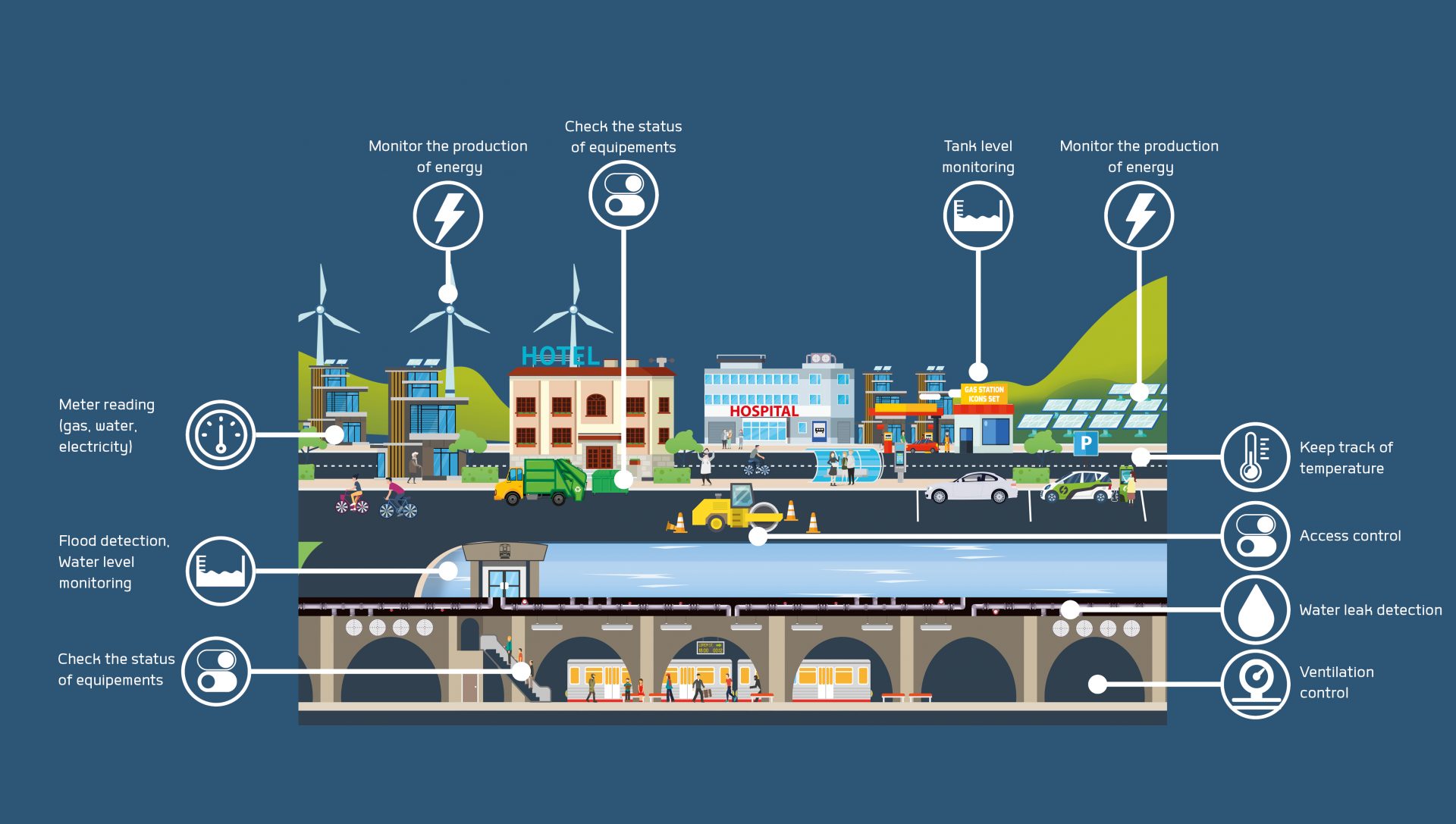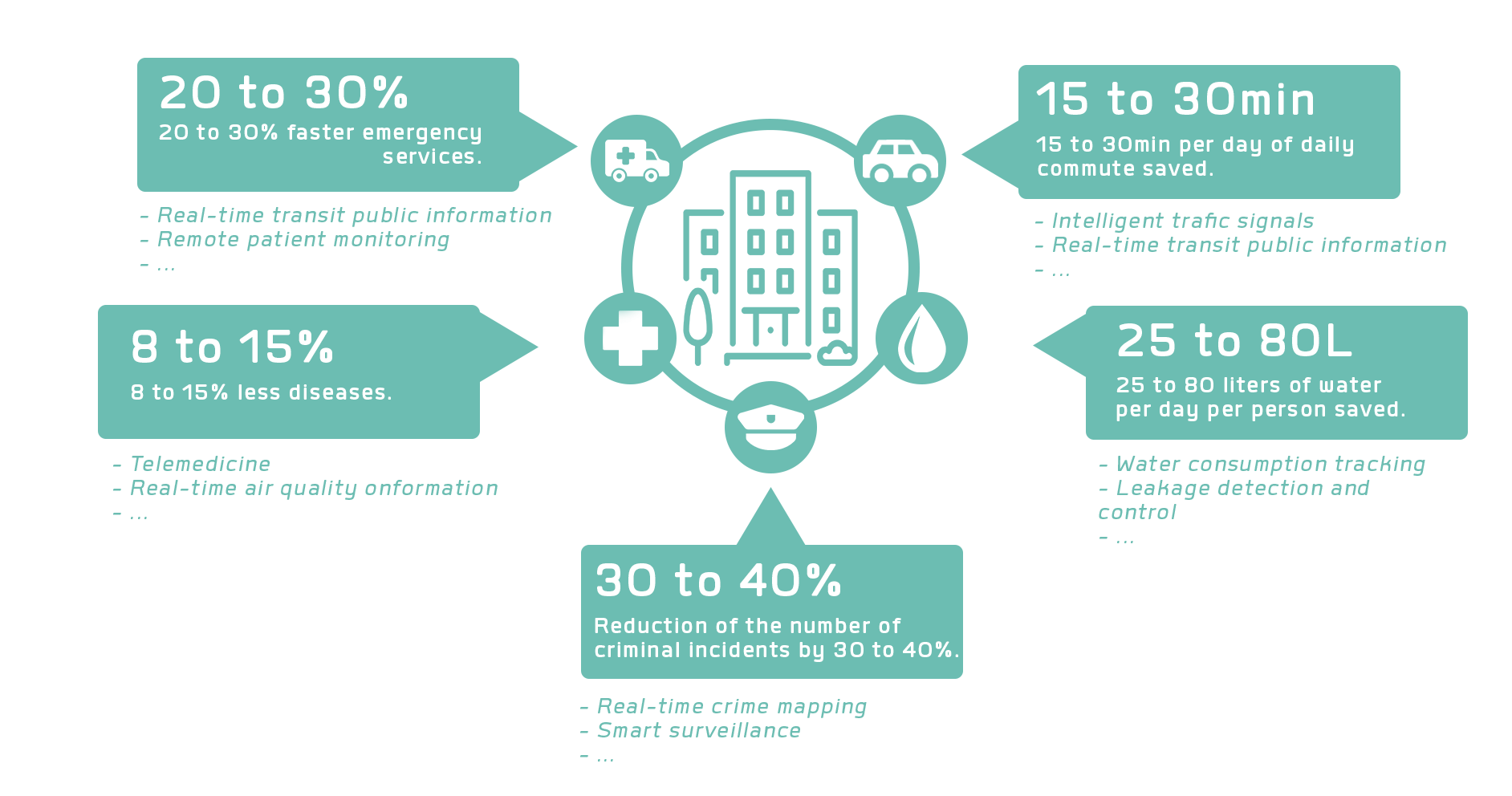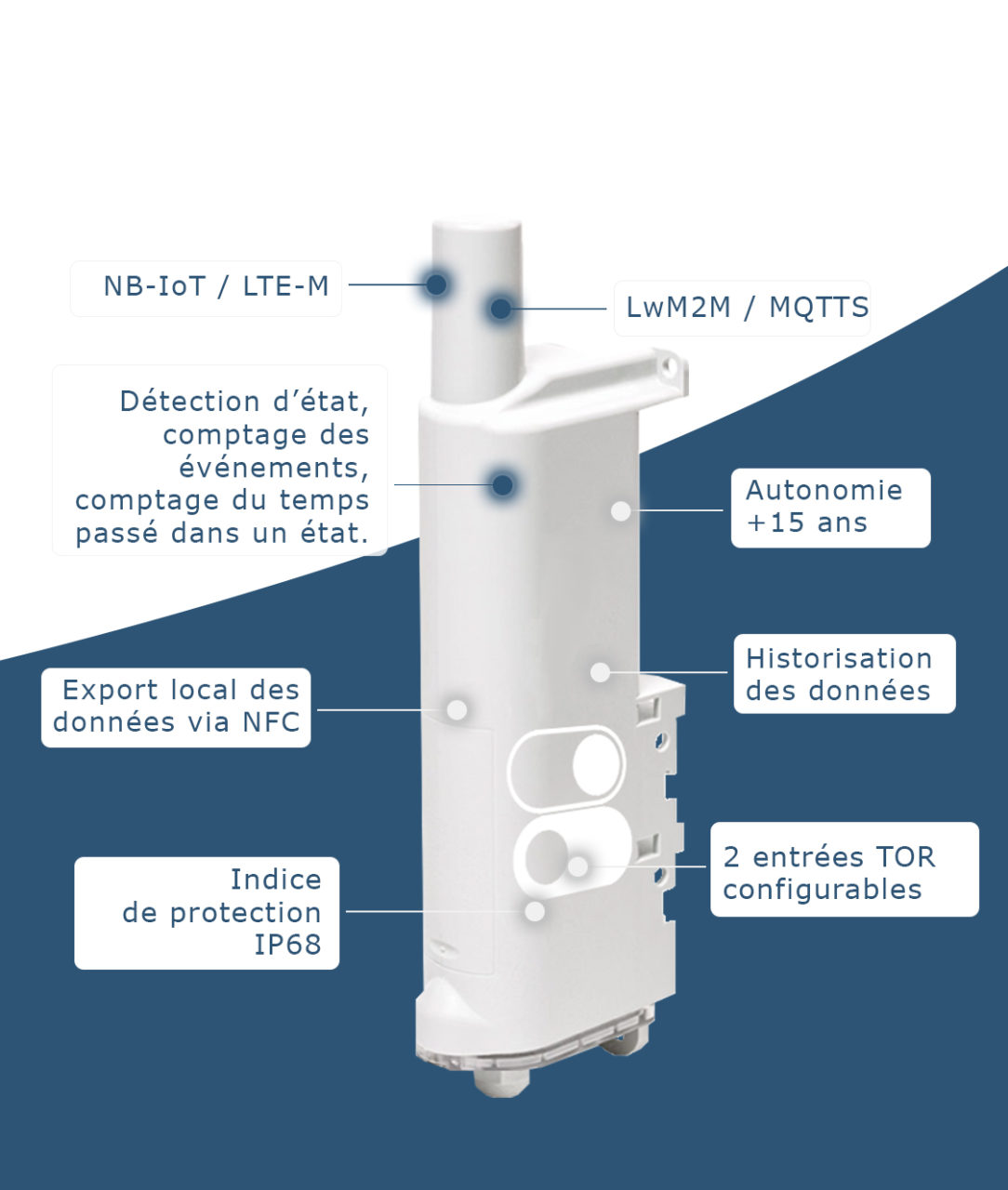What will the city of tomorrow be like? How can we make it more pleasant for its citizens to live in? More respectful of the environment? How can we reconcile population density, increased consumption, sustainable development, safety and well-being of the inhabitants? These are the challenges for the city of tomorrow. Indeed, with an ever-increasing concentration of the population in cities, it is necessary to rethink its organisation and optimise its resources.
Bringing intelligence to cities through IoT, by developing smart cities, is one of the solutions used to meet these challenges.
WHAT IS A SMART CITY?
A smart city is a city that collects data, analyses it and uses it to improve the quality of life of its inhabitants, by improving the quality of urban services or reducing its costs.
Several areas may be involved such as:
- the performance of buildings,
- energy consumption,
- management of urban furniture,
- waste management,
- public lighting management
- the fluidity and accessibility of transport,
- …
Key figures of the smart city
Cities occupy 2% of the earth’s surface and produce 80% of greenhouse gas emissions.¹
50%
50% of the world’s population lives in cities. In 2050, this percentage will rise to 70%.¹
9.2 Mrds
Local authorities could save up to €9.2 billion a year thanks to smart cities within 5 to 10 years.²
308 Mrds
The smart city market is expected to grow from $308 billion in 2018 to $717 billion in 2023.³
The importance of data for the smart city
Improving the use of cities requires, first and foremost, a precise knowledge of its use. Indeed, in order to improve what already exists, it is necessary to know it. Data is therefore a major issue in the race for the intelligent city.
It is in this context that the IoT takes on its full meaning for the smart city, by becoming a facilitator enabling the city to be improved and optimised. The IoT brings connectivity into everyday objects that are devoid of it and thus makes it possible to collect a number of essential data. Once collected and analysed, this data will serve as a basis for the implementation or initiation of new practices in cities.
IoT and Smart City applications

The IoT sensors therefore provide real-time access to the city’s usage information in order, to improve:
Building performance
- Optimising the use of heating
Thanks to the data collected by temperature sensors in rooms or living areas, it is possible to adapt the use of heating to the real needs of the occupants and thus save energy.
- Checking the proper functioning of ventilation systems
These systems allow a room to be properly ventilated and therefore help to ensure good indoor air quality. Ensuring that they are working properly means ensuring the well-being of users and also keeping buildings healthy.
Energy consumption
Detect a leak as soon as possible. Leaks in the water system are difficult to detect and therefore incur high costs. With the installation of IoT sensors, it is possible to know the evolution of consumption over time in detail and also to quickly detect an over-consumption and therefore a leak. Corrective actions can then be taken quickly.
Waste Management
- Waste management
Determine the filling rate of a refuse container. Thanks to this information, the technical services can best organise the passage of vehicles according to real needs and not according to a pre-planned route that does not take this data into account. The routes are optimised and the costs of petrol or vehicle operation are reduced.
Urban space management
- Informing motorists about available parking spaces
This practice makes it possible to reduce the time vehicles spend in traffic and thus reduce polluting emissions and noise pollution and also improve the well-being of drivers.
- Management of urban spaces
Follow the water level of a river to anticipate a flood. Thanks to sensors positioned along quays or under bridges, the city can find out the water level of the river and be alerted if a threshold is exceeded. The technical teams are then informed as soon as possible and can take the necessary measures.
Use of street lighting
- The use of urban lighting
Check the use of the lamp posts. The lighting can be adapted to the passages in a street so as not to consume too much electricity if it is not necessary.
Outdoor Air Quality
- Monitor air quality
The outdoor air quality index is highly regarded in cities. By placing sensors at different locations in the city, it is possible to have a reliable and near real-time idea of air quality and pollution levels.
Road safety
- Road safety
Check the temperature of the pavement. During the winter, knowing the temperature of the roads allows us to better prevent a period of frost and avoid the associated risks. With this data, cities can trigger salting operations at the right time.
Smart City for what results?
In a recent study, the New York consulting firm McKinsey believes that the implementation of smart city solutions should bring a number of tangible results:

¹ https://www.opendatasoft.com/fr/blog/2016/04/29/cest-quoi-la-smart-city-une-introduction-a-la-ville-intelligente
² https://www.ilv.fr/la-smart-city-definition-chiffres-et-evolution-en-france/
³ https://www.zonebourse.com/actualite-bourse/Smart-City-Investir-dans-une-megatendance–31001571/
05/10/2020
20 years
expertise to support you, from the diagnosis to the implementation of your solution


